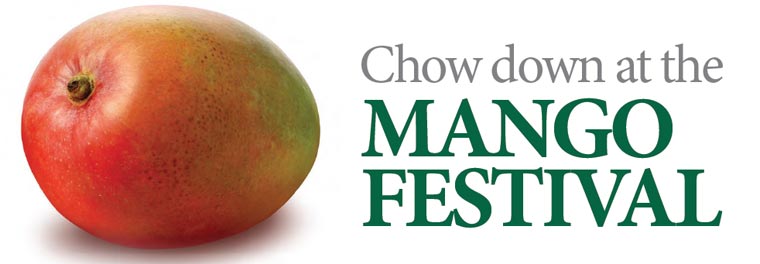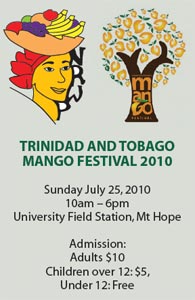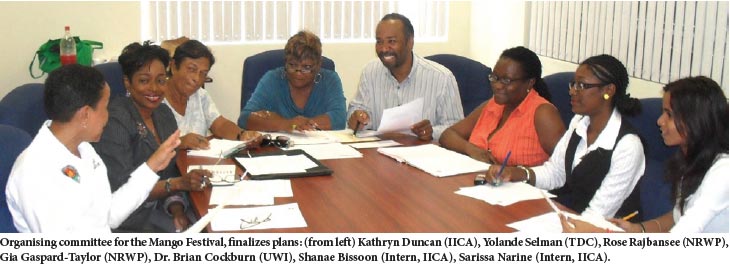|
June 2010

Issue Home >>
|

Did you know that the succulent Julie mango really comes from Trinidad even though the world’s mango family was really born in India? At first blush, it sounds like the story of indentured labour, but in truth, when you think about the varieties of mango that have sprung up wherever there is warm, dry weather in the world, it is really the tale of globalization—everything is everywhere, just bearing the stamp of its immediate environment.
Although nearly half of the world’s mangos are cultivated in India, there are innumerable varieties from region to region. In the Caribbean alone several types can be found and everyone has their favourite (and their favourite way to eat them!). In Trinidad, the most popular ones are the Julie and the Starch, which now fetch high prices at the market.
But how many can recall names like Long mango, Rose, Hog, Calabash, Manzanilla Douxdoux, La Brea Gyul, Turpentine, Mangotine, Graham, Ten-pound, Bastapool, Belly-bef, Cedar, Cutlass, Peter, Vert, Zabrico; or traditional Tobago fare like Ice-cream, Mango Mossy and John Buck Mangoes in Moriah and Suppie Mango in Bon Accord, or Button Mangoes in Charlotteville?
Well, the upcoming Trinidad and Tobago Mango Festival offers a chance to discover or rediscover the pleasure David Rudder invoked in “Song for a Lonely Soul” with the lines, “A mind excursion it can take me/ To a far off country road / Sticky mango juice running down my naked chest.”
You might not get drenched in sticky mango juices, but there is a lot to be had at this second edition of the day-long Festival which takes place on Sunday July 25 at the University Field Station in Mt Hope from 10am. 
The day is full of activities meant to promote mango as a business enterprise, to teach people about the various features of mango life and to offer some tempting mango delicacies and fruit. The day opens with a mango market, and then a presentation on how mangos are used around the world in various ceremonies. Just after lunch the formal part kicks in, and this includes a tea party. Storytellers will tell the tales of the mango at a specially set up storytelling centre and of course, there will be discussions of the place of the mango in Caribbean literature. Naturally, the day will end with a chow-down of sorts: competitions to see who can prepare the wickedest mango dish, who can smell and name a mango, and who can produce the best display.
It is a richly textured day, fulfilling the challenge the Network of Rural Women Producers Trinidad and Tobago (NRWP) set for themselves when they decided to hold the first festival in August 2009. Then they had dedicated themselves to providing “a day of education about the values of mangoes,” said Gia Taylor, one of the key organisers. “It is still a day of fun, community education, including, activities for all ages, story telling, ‘smell and name the mango’ best mango chow, best mango display, grafting, sweets jellies, cakes, teas, beauty products, religious cultural uses, medicinal uses and more,” she said.
This year, the Business Development Unit of The Faculty of Science and Agriculture at The UWI has joined with them, taking three booths, and adding such dimensions that “business development and the educational aspect will be given top billing this year,” she said.
“We stake claim to the Festival as the original organization to host the event,” said Taylor. “Our partners are The Food and Agriculture Organization of the United Nations (FAO) and Inter-American Institute for Corporation on Agriculture, (IICA) The Ministry of Food Production, Land and Marine Services, and we are very pleased have UWI join us.”
Saying that she looked forward to the Tourism Development Company listing this as an annual attraction, she added that they hope to see the Festival grow to a two-day event.

|





